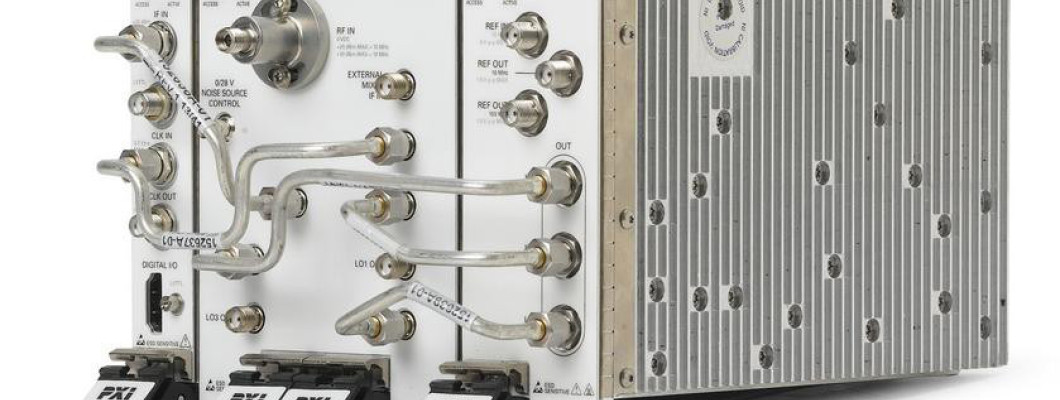
LabVIEW + PXI for Testing Automotive Radar Sensors (ADAS)
Published by: Sohoprolab Editorial Team | Date: July 8, 2025
Introduction
Modern vehicles depend on radar sensors for key ADAS (Advanced Driver Assistance Systems) functions like collision avoidance, blind-spot detection, and adaptive cruise control. Testing these automotive radar modules requires a combination of high-frequency signal generation, real-time simulation, and precise measurement. LabVIEW and PXI-based test platforms deliver the flexibility and performance needed to validate radar systems under dynamic, realistic conditions — all within a modular and scalable framework.
Why PXI for Automotive Radar Testing?
The PXI (PCI eXtensions for Instrumentation) platform is ideal for ADAS sensor validation due to its compact size, high data throughput, and wide range of RF modules. Combined with LabVIEW for automation and visualization, PXI systems support:
- 77–81 GHz radar waveform generation using vector signal generators (VSGs)
- Real-time signal capture with PXIe VSAs like the NI PXIe-5668R
- Hardware-in-the-loop (HIL) simulation for closed-loop sensor testing
- Multi-sensor synchronization for full-vehicle radar array validation
See available options in our PXI Modules section.
System Architecture for Radar Validation
A typical PXI radar test rack includes the following components:
- PXIe-5840 or PXIe-5655: Wideband vector signal generators for 76–81 GHz chirps
- PXIe-5668R: Real-time VSA with up to 26.5 GHz capture
- RF up/down converters: For mmWave band translation
- SMUs: Power supply and monitoring for radar transceivers
- Digital I/O: Synchronization with ECU, CAN/LIN buses
The entire test sequence is orchestrated in LabVIEW or TestStand, including waveform synthesis, timing control, real-time feedback, and database logging.
LabVIEW Applications for Radar Testing
LabVIEW provides the graphical programming environment to create sophisticated RF test workflows with minimal coding. Key use cases include:
- Radar Chirp Generation: Linear FM signals with adjustable sweep time, bandwidth, and power
- Automated Calibration: Antenna calibration and gain flatness routines
- Target Emulation: Simulated Doppler returns with precise timing
- Thermal Stress Routines: Integrate climate chamber control with radar signal injection
- Failure Injection: Simulate cable faults, power fluctuations, and sensor drift
LabVIEW’s instrument control, data logging, and UI tools accelerate test cycle development and reduce debug time.
Hardware-in-the-Loop Testing (HIL) for Radar
HIL setups combine radar signal synthesis with simulated environment models, allowing closed-loop testing of radar-based ECUs. PXI modules can inject synthetic returns into radar sensors while monitoring their response. Benefits include:
- Repeatable scenarios: Rain, fog, reflections, and multi-target simulations
- End-of-line test automation: Short test cycles for radar sensor QC
- Integration with simulation tools: MATLAB, Simulink, or CarSim via LabVIEW APIs
Key Benefits of PXI + LabVIEW for Radar Testing
- Modular scalability: Add channels or bands as needed
- High test throughput: Fast waveform switching and parallel processing
- Multi-domain integration: Combine RF, power, and digital subsystems
- Compact rack footprint: Compared to traditional benchtop setups
- Full automation: From turn-on to data upload
Frequently Asked Questions
- Can PXI test both transmit and receive radar paths?
- Yes. PXI-based VSGs and VSAs support both transmission and echo capture with timing control.
- Is LabVIEW required for PXI radar testing?
- No, but it simplifies integration. You can also use Python, C++, or TestStand APIs.
- What frequency range is covered?
- PXI modules support up to 44 GHz with upconverters — ideal for 24 GHz, 77 GHz, and 79 GHz radar bands.
Conclusion
Combining LabVIEW with PXI modular instrumentation gives ADAS developers the tools needed to test automotive radar sensors with precision, flexibility, and repeatability. From chirp generation to HIL simulation, these systems are powering the next generation of automotive safety. Browse our PXI Platform and Wireless Design & Test solutions for radar and mmWave applications.
